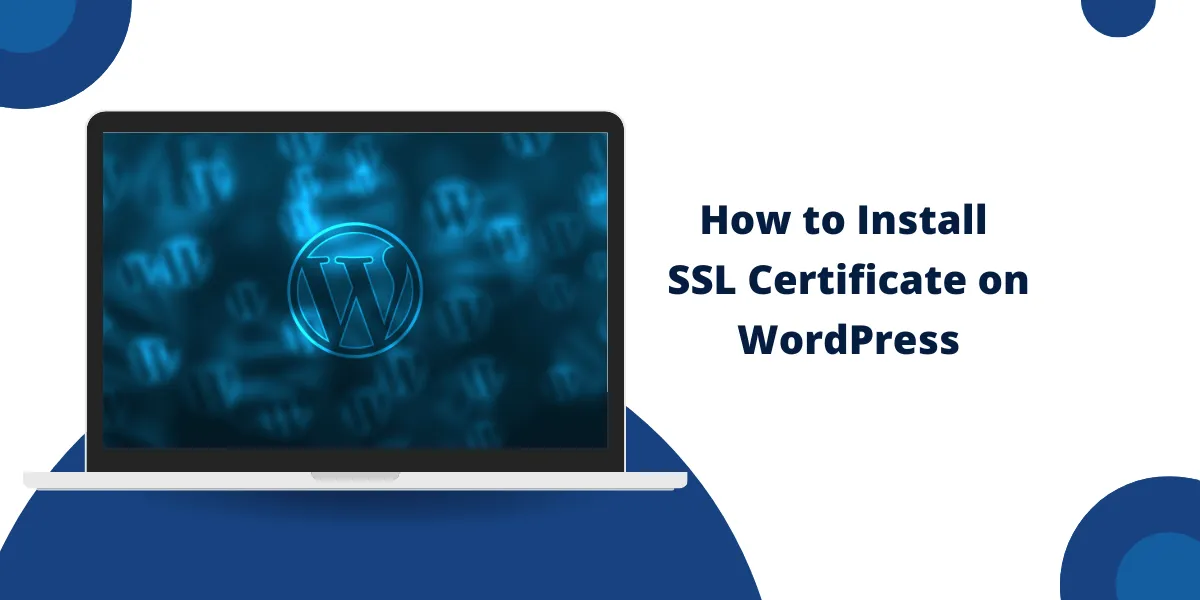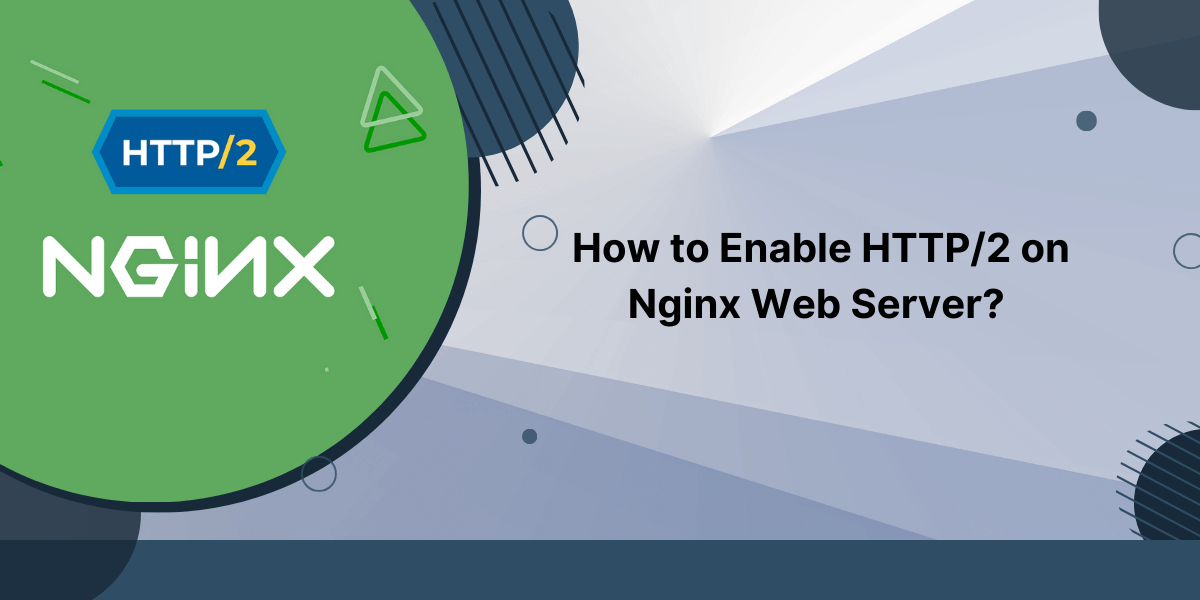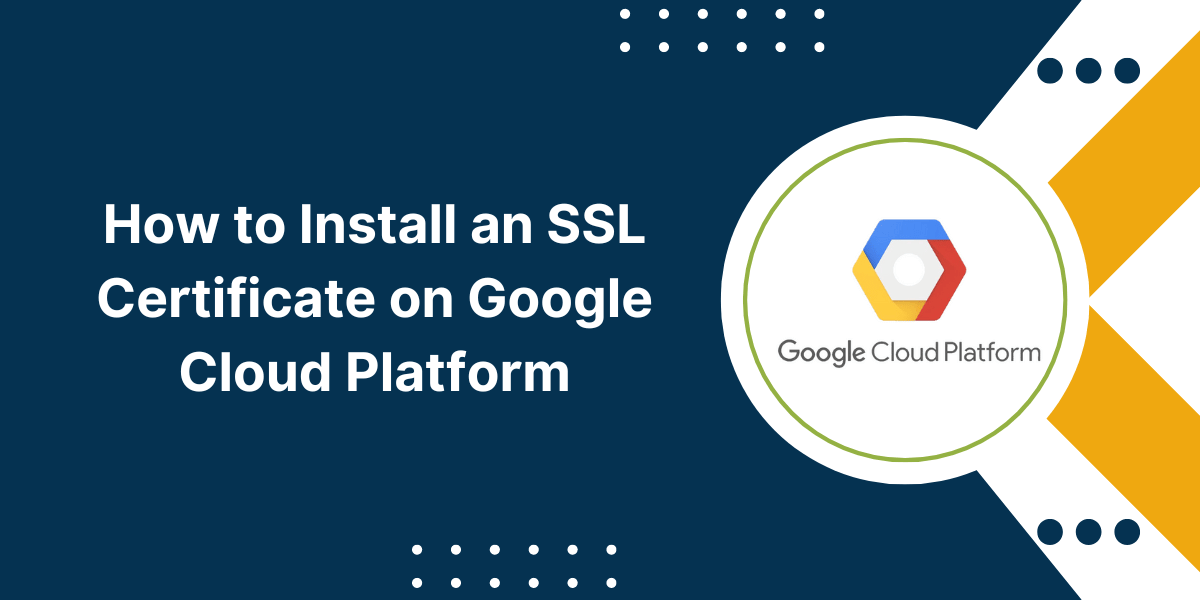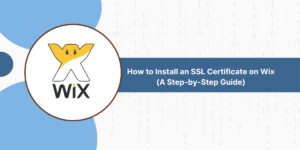Steps for Installing an SSL Certificate on WordPress
Installing an SSL certificate on WordPress is an essential security step for any WordPress website. An SSL certificate encrypts the connection between your WordPress site and visitors, preventing hacking of sensitive user data. This guide will walk you through how to install an SSL certificate on WordPress from start to finish. I’ll cover buying an SSL certificate, generating a CSR code, installing the SSL certificate on your web server, and forcing HTTPS on your WordPress site to switch to secure HTTP protocol.
You can activate HTTPS and lock down your WordPress site with just a few quick steps. The installation process is straightforward, whether you use shared hosting or WordPress hosting or have your own VPS or dedicated server. Follow along to learn the easy process of installing an SSL certificate to secure your WordPress website in just minutes.
Key Takeaways
- SSL certificates encrypt connections to secure sensitive user data entered on your site.
- They activate Tune Icon and “https” on your URL, build visitor trust, and can improve SEO.
- To install an SSL on WordPress, you’ll need to purchase a certificate, add files to your server, update settings in WordPress, and change some URLs.
- Options like Let’s Encrypt provide free SSL certificates, while paid certificates from providers like Sectigo are more validated.
- Proper SSL installation requires updating references to site URLs in various places to use “https” instead of “http.”
Why You Need an SSL Certificate on WordPress
Before going into how to install an SSL certificate on WordPress, let’s look at why you need one in the first place:
Encrypt Sensitive Connections
The primary purpose of an SSL certificate is to encrypt data transmitted between your site and visitors’ browsers. This includes:
- Login details like usernames and passwords
- Payment information for purchases and donations
- Contact forms and other user-submitted data
Encryption prevents hackers from accessing this sensitive information. It scrambles data during transmission so only you and authorized recipients can decipher it.
Build Visitor Trust
When visitors arrive at a site over HTTP, there’s no way for them to validate it’s real and secure. A valid SSL certificate activates Tune icon and “https” in browser address bars.
This visual signal assures visitors their connection is encrypted. It conveys your site is professional, validated as legitimate, and safe to browse and enter information on.
Improve SEO
Since 2014, Google has used HTTPS as a positive ranking signal for SERPs. Sites secured with SSL certificates can benefit from improved SEO:
- Google considers HTTPS a sign that your site is trustworthy.
- Encryption provides authenticity signals to Google bots during crawling and indexing.
- HTTPS prevents search engine spam techniques like keyword stuffing over insecure connections.
Migrating your WordPress site to HTTPS shows Google you prioritize security and performance best practices.
Prerequisites for Installing an SSL Certificate on WordPress
Before installing your SSL certificate, make sure your WordPress site and web host meet these prerequisites:
Self-Hosted WordPress Site
You’ll need access to install plugins and edit PHP/WordPress files – options not available for WordPress.com sites. Self-hosted WordPress allows full SSL certificate installation.
Web Hosting Plan with Dedicated IP
Entry-level shared hosting plans often lack the dedicated IPs needed for some SSL certificates. Check that your web hosting plan includes a dedicated IP address.
If not, upgrade to a VPS, cloud hosting, or managed WordPress plan with dedicated IP support.
Support for SSL Certificates
Confirm your web host allows SSL certificate installation. Some only support certain types, while others restrict SSLs to higher-tier hosting plans.
Ask them which SSL certificate providers they allow and what validation types they support.
How to Purchase an SSL Certificate
Once you decide on the type of SSL certificate you need and a provider to purchase from, here are the steps to buy an SSL certificate:
- Research pricing: Compare costs across providers for the validation, security level, and features you want.
- Select a certificate: Pick a specific SSL certificate plan that matches your WordPress site’s needs.
- Purchase the certificate: Buy from the SSL provider, usually for a 1-2 year subscription fee.
- Verify your identity: Complete the provider’s identity verification process to validate you and your organization.
- Get certificate files: After verification, the SSL provider will email you the unique certificate files required for WordPress installation.
- Renew subscriptions: Re-verify your identity periodically to renew expiring certificates and maintain security.
6 Easy Steps to Install SSL Certificate in WordPress
Follow these steps to properly install SSL certificates on WordPress:
- Download Certificate Files
- Upload Files to the Web Server
- Install WordPress SSL Plugin
- Enter Certificate Details
- Enforce HTTPS in WordPress
- Change Site URL to HTTPS
Step 1: Download Certificate Files
After buying and verifying your identity for an SSL cert, the provider will email certificate files, which commonly include:
- Certificate: The primary SSL certificate file with your domain name and validation details.
- Private Key: Encrypted private key for certificate installation. Keep this file private.
- CA Bundle: Intermediate certificate files that chain to trusted root certificates.
Download these files provided by your SSL certificate authority. Having these is required for certificate installation in WordPress.
Step 2: Upload Files to the Web Server
Using FTP, SFTP, or your web host’s file manager, upload certificate files to the root folder of your web server. This is usually the /public_html/ or /httpdocs/ directory.
Your web host may have specific guidance on which folders to upload the cert files to. Follow their recommendations carefully.
Step 3: Install WordPress SSL Plugin
Install and activate an SSL plugin like WP Force SSL or Really Simple SSL in your WordPress site’s admin dashboard.
This automates forcing HTTPS connections and rewriting HTTP URLs to HTTPS, which are required when you switch to SSL certificates.
Step 4: Enter Certificate Details
In the settings page of your chosen WordPress SSL plugin, input the paths to your uploaded certificate files. This links the plugin to your actual SSL certificate for activating encryption.
The plugin uses details from the cert file to handle HTTPS redirection and enable other WordPress security features.
Step 5: Enforce HTTPS in WordPress
Still, within your SSL plugin’s settings, enable the “Force SSL” option to redirect all HTTP requests to HTTPS. This ensures connections are encrypted.
The plugin will now force HTTPS URLs across your site for visitors and in WordPress itself.
Step 6: Change Site URL to HTTPS
Under WordPress Settings > General, update both the WordPress and Site Address URLs to use HTTPS instead of HTTP.
This further cements HTTPS as the default across all WordPress pages and links.
Your SSL certificate is now fully configured in WordPress to encrypt visitor connections!
Free SSL Certificate Options for WordPress
Here are some ways to get a free SSL certificate for WordPress:
Let’s Encrypt
Let’s Encrypt provides free SSL certificates through an automated process. It has wide browser compatibility and auto-renews every 90 days.
The downsides are needing to manually renew every 3 months and configuring the validation process. Let’s Encrypt is great for getting started with HTTPS on WordPress.
Self-Signed Certificate
You can create your own self-signed certificate for free. However, this will trigger security warnings in browsers. Visitors won’t consider self-signed certificates as trustworthy as a paid commercial SSL.
Shared SSL via Web Host
Some web hosting providers include shared SSL certificates with certain hosting plans. However, this may only cover your main domain name, not subdomains.
Cloudflare
Cloudflare’s free plan provides basic shared SSL coverage. You can also pay to upgrade to complete SSL support with wild card certificates.
If you want the maximum trust and SEO benefits, a paid SSL certificate is recommended over the free options above.
Paid SSL Certificate Providers for WordPress
Here are some top paid SSL certificate providers to consider for WordPress sites:
Sectigo SSL Certificates
Sectigo (formerly Comodo CA) is an SSL provider focused on encryption and authentication technologies. They offer certificates with strong encryption sign.
DigiCert SSL Certificates
DigiCert is the leading global provider of SSL certificates and is known for reliable customer support. They offer certificates for sites and organizations of any size.
GoDaddy SSL Certificates
GoDaddy is the world’s largest domain registrar and a major SSL certificate provider. Their certificates integrate seamlessly with GoDaddy-hosted WordPress sites.
Comodo SSL Certificates
Comodo SSL specializes in security solutions beyond basic SSL certificates. They offer malware scanning, website backups, and other security tools.
GlobalSign SSL Certificates
GlobalSign is another longstanding SSL certificate authority trusted by organizations worldwide. Like DigiCert, they cater to both small and enterprise-level sites.
When purchasing a paid certificate, check reviews to pick a reliable provider known for user-friendly experiences.
Troubleshooting WordPress SSL Certificate Issues
If you run into problems after installing an SSL certificate on WordPress, here are some troubleshooting tips:
Update References to HTTP URLs
Check that all URL references in your WordPress content, menus, plugins, themes, etc, are updated to HTTPS. Outdated HTTP references can cause mixed content warnings.
Reupload Certificate Files
Reupload certificate files in case of a permissions issue or accidental deletion. Double-check they are in the proper directory defined by your host.
Verify Certificate is Signed for Domain
Confirm the SSL certificate was issued specifically for your domain name. An improper domain certificate mismatch will prevent full HTTPS activation.
Contact Web Host Support
Your web host manages the server environment and can help troubleshoot SSL installation problems like missing directories or permission issues.
Reissue or Request a Refund for Invalid Certificates
If your SSL certificate turns out to be invalid or the wrong type for your site, contact the provider about reissuing or refunding the purchase.
With some debugging, you can resolve the most common problems when installing and switching to an SSL certificate on WordPress.
How to Update Old Content After Migrating to HTTPS
Once your WordPress site has HTTPS enabled, you still need to update old content to reference the new HTTPS URLs. This prevents insecure content warnings.
Here are some tips for updating existing WordPress content to HTTPS:
- Use a search and replace tool to change all instances of “http://” to “https://” across posts and pages.
- Install a plugin like Really Simple SSL to auto-convert old image URLs and links to HTTPS.
- Update any hardcoded links and image embeds in your theme files to use HTTPS URLs.
- If you have an image CDN or media URLs stored in a database, change those to HTTPS too.
- Resave/reupload images and PDFs to retrieve over HTTPS rather than HTTP.
- Check that embedded elements like videos, sliders, and maps use HTTPS URLs if available.
- Update sitemaps, RSS feeds, canonical tags, and robots.txt to HTTPS.
- If you use redirects, make sure those are redirected to HTTPS URLs where possible.
Taking time to update legacy content ensures a smooth HTTPS transition and no warnings for site visitors.
Best WordPress SSL Certificate Plugins
Along with the Really Simple SSL and WP Force SSL plugins mentioned above, here are some other top options:
- SSL Insecure Content Fixer: Automatically fixes insecure content by replacing HTTP with HTTPS in website elements.
- HTTPS Switcher: Forces HTTPS and SSL across your WordPress site with HSTS support.
- SSL Zen: All-in-one plugin to implement SSL certificates in WordPress. Handles mixed content, too.
- WordPress HTTPS (SSL): Secure your site with HTTPS and add trust seals in WordPress.
The right SSL plugin takes the headaches out of configuring your SSL certificate in WordPress. It provides a simple dashboard to enable HTTPS URLs throughout your site automatically.
How to Renew Your WordPress SSL Certificate
SSL certificates eventually expire, at which point they will no longer encrypt connections.
Here are some tips for renewing your WordPress site’s SSL certificate:
- Check expiration date: Log into your SSL provider account to see when your current certificate will expire.
- Renew ahead of time: Renew your certificate subscription 1-3 months before the expiration date to avoid lapses in security.
- Re-verify identity: You’ll need to complete the identity verification process again when renewing.
- Generate new certificate: Your SSL provider will issue new certificate files to download and reupload to your server.
- Input new details: Follow the WordPress install process again, now using the renewed certificate’s details.
Renewing SSL certificates periodically is essential to maintaining constant HTTPS encryption for your WordPress site.
How to Migrate from HTTP to HTTPS on WordPress
Switching a site from HTTP to HTTPS involves more than just installing an SSL certificate in WordPress. For the full HTTPS transition, you’ll also need to:
- Update internal links: Change all hardcoded links and image URLs in content, menus, widgets, etc., to use HTTPS instead of HTTP.
- Update sitemaps: Resubmit XML, HTML, and RSS sitemaps with HTTPS URLs through the Search Console.
- Update canonical tags: Edit canonical meta tags on pages and posts to point to the HTTPS URL.
- Update external links: Contact sites link to yours and request they update to your HTTPS URL.
- Update redirects: Set up 301 redirects for old HTTP pages that now live on HTTPS URLs.
- Enforce HSTS: Use the HTTPS Strict Transport Security (HSTS) header to tell browsers to only interact with your site over HTTPS.
Take the time to update both internal and external HTTP references. This ensures a smooth transition to being fully HTTPS.
Final Thoughts
Installing an SSL certificate is one of the most important security measures to implement on any WordPress site. By encrypting connections, SSL certificates prevent hackers from stealing sensitive user data entered on your site. They also provide the Tune icon and “https” URLs that reassure visitors your site is safe and legitimate.
The process involves purchasing and verifying your identity for the certificate, downloading key files from the provider, uploading them to your web server, and configuring options in WordPress to force HTTPS and rewrite links.
With a proper SSL certificate installed, you can rest easy knowing your WordPress site is secure and ready to benefit from improved SEO rankings.
FAQs About Installing SSL Certificates on WordPress
Here are answers to some frequently asked questions site owners have about installing SSL certificates on WordPress:
Do I need an SSL Certificate for WordPress?
Yes, all WordPress sites should use SSL certificates. HTTPS encryption is crucial for securing sensitive user connections and data. SSL certificates also provide SEO and credibility benefits.
Can You Use SSL Certificates on a Shared Hosting Plan?
It depends on the web host. Many basic shared hosting plans lack dedicated IP addresses, which are required for some SSL certificates. Check with your WordPress hosting provider to confirm SSL support. VPS, cloud hosting, and managed WordPress plans often include SSL certificates.
How Long Does it Take to Install an SSL Certificate on WordPress?
Once you have the needed SSL certificate files, installing them on WordPress typically takes less than 30 minutes. The bulk of the time for “installing SSL” goes into purchasing, verifying, and generating the cert files themselves, which can take 1-5 days.
What Files Do You Need to Install an SSL Certificate on WordPress?
To install an SSL certificate on WordPress, you’ll need the primary certificate file, private key, and any intermediate certificate/CA bundle files provided by the SSL certificate authority after validating your identity and domain ownership.
Do I Need a Separate IP Address for SSL?
In some cases, yes. Entry-level shared hosting plans often use a shared IP address, which prevents the installation of certain SSL certificates. Upgrading to a hosting plan with a dedicated IP address is recommended to use full HTTPS encryption.
How Do I Update HTTPS in WordPress After Installing an SSL Certificate?
Once the SSL certificate is activated in your WordPress site, go to Settings > General and update both the WordPress and Site Address URLs to use HTTPS instead of HTTP. Install an SSL plugin to automatically handle enforced HTTPS redirects.
What if I get an error saying, “Your connection is not private” after enabling SSL in WordPress?
This typically means there is a problem or mismatch with the SSL certificate files you uploaded. Double check that you uploaded the correct cert files for your domain. The certificate may need to be reissued if invalid.
How Do I Renew an Expiring SSL Certificate on WordPress?
Log into your SSL provider account to renew your certificate subscription before expiration. You’ll go through identity verification again, get new cert files, and reupload these to enable the renewed certificate in WordPress.
Can I Use an SSL Certificate on Multiple WordPress Sites?
With some providers, yes. A wildcard SSL certificate covers unlimited subdomains under a base domain. You can use this single wildcard certificate to enable HTTPS across multiple subdomains and WordPress sites.
Is There Any Downside to Migrating WordPress to HTTPS?
Very minor. You may see a slight performance hit from the encryption overhead. And migrating to HTTPS requires updating links and sitemaps to the new URLs. However, the security and SEO benefits far outweigh these costs.

Priya Mervana
 Verified Web Security Experts
Verified Web Security Experts
Priya Mervana is working at SSLInsights.com as a web security expert with over 10 years of experience writing about encryption, SSL certificates, and online privacy. She aims to make complex security topics easily understandable for everyday internet users.



